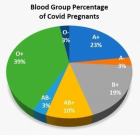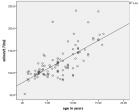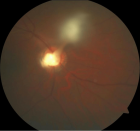About Ferdowsi University of Mashhad
Ferdowsi University of Mashhad
Articles by Ferdowsi University of Mashhad
Production and evaluation of enzyme-modified lighvan cheese using different levels of commercial enzymes
Published on: 27th February, 2020
OCLC Number/Unique Identifier: 8560724525
Enzyme-modified cheeses are concentrated cheese flavors produced enzymatically from dairy substrates in order to provide an intense source of cheese flavor with broad applications. Lighvan cheese is an Iranian traditional cheese with a pleasant taste and flavor generated after ripening. Therefore, the objective of the present study was to use commercial enzymes to produce enzyme-modified Lighvan cheese made from unripened and immature cheese. In this study, Neutrase (0.05%, 0.15%, and 0.2%) and Flavourzyme (0.05%, 0.1%, and 0.2%) were added to the base mixture. The resulting mixture was stored in an incubator for 24, 72, and 96 h to provide intense cheese flavor. Sensory evaluations of all samples in terms of bitterness, flavor, taste, and general acceptance were also carried out.
The results of the sensory evaluations revealed no significant difference between most of the samples in terms of bitterness, flavor, taste, and general acceptance with respect to the incubation duration and the type and level of the commercial enzymes (p ≤ 0.05). However, the effect of the different concentrations of Flavourzyme on the cheese texture was significant after 24, 72, and 96 h of incubation (p ≤ 0.05). In addition, the effects of the different concentrations of Neutrase on the cheese texture were significant after 96 h of incubation (p ≤ 0.05). Finally, the effect of different concentrations of Flavourzyme on the general acceptance of the samples was significant following 24, 72, and 96 h of incubation (p ≤ 0.05). In general, considering the flavor, taste, texture and general acceptance scores of the enzyme-modified Lighvan cheese samples, the best sample was the sample produced by using 0.1% Neutrase and 0.1% Flavourzyme mixture.
Assessment and sensitive analysis of biological water risks in water resources with application of classical mass transfer computations
Published on: 9th June, 2021
OCLC Number/Unique Identifier: 9124650394
Due to the urgent need for water in all parts of industrial or developing societies, water supply, and transmission facilities are suitable targets for biological risks. Given that even a short interruption in water supply and water supply operations has a great impact on daily activities in the community, the deliberate contamination of urban water resources has irreparable consequences in the field of public health, and the economy of society will follow. Unfortunately, most officials in the public health control departments in our country have received limited training in detecting accidental or intentional contamination of water resources and dealing with the spread of waterborne diseases both naturally and intentionally. For this reason, there is low preparedness in the responsible agencies to deal with waterborne diseases during biological risks. In the first step of this research, a review study has been conducted on water biological risks and operational strategies to deal with them. In the following, it has studied how Escherichia coli (E. coli) bacteria spread in aqueous media. In this regard, the kinetic model of the studied microorganism was analyzed based on the implementation of (Fick Law) in polar coordinates and the combination of (Dirac Distribution) with (Legendre polynomial) distribution. Finally, after studying the factors affecting the microbial pollutant emission coefficient, the effects of all three factors of linear velocity, linear motion time period, and angle of motion on the pollutant emission flux and biofilm diffusion time in the water supply network environment were investigated. Studies have shown that the linear velocity parameter of Escherichia coli with a nonlinear relationship has the greatest effects on the release of microbial contaminants.
Simulating the dispersion of poisonous organic chemical compounds in wastewater treatment process through the active sludge method using the TOXChem model
Published on: 24th June, 2021
OCLC Number/Unique Identifier: 9124851637
Naturally, microorganisms decompose the organic material existing in nature, both in the presence or absence of oxygen. The majority of materials such as poisonous chemical compounds, heavy metals, would prevent the treatment process from taking place, lead to the entry of these contaminants into the environment results in the emergence of numerous diseases. In the present study, using the TOXChem4.1 simulation model, attempts were made to simulate a wastewater treatment plant and then assess the dispersions of contaminants including 1,2-Dimethylnaphthalene, 1,3-Dinitropyrene, 1,6-Dimethylnaphthalene, 1,6-Dinitropyrene, and 17a-ethinylestradiol (EE2) in concentrations of a common scenario. The results of computer simulations showed that the EE2 contaminant is of the highest percentage of decomposition among others, due to its wider chemical structure. Consequently, it is clear that such contaminant is of the highest mass in the sludge exiting the treatment plant. In addition, the results of the simulations demonstrated that the highest volumes of gaseous pollutants take place in the modulation and initial sedimentation units.
Ranking of cadmium low amount measurement systems according to economic, environmental, and functional indicators using ELECTRE analytical method
Published on: 8th September, 2021
OCLC Number/Unique Identifier: 9244774024
Cadmium is one of the transition metals, known by the scientific name Cd. One of its main characteristics is the high toxicity, even in very little amounts. Cadmium is often released through industrial effluents, pesticides, chemical fertilizers, and the burning of fossil fuels. Since the presence of cadmium ions in the living organisms’ body, especially humans, can cause serious damage to the liver and pancreas, and also because its role in causing cancer has been proven, measuring very low amounts of this metal is of high importance. In the first step, this study has reviewed and analyzed common laboratory methods for measuring small amounts of cadmium. Then, according to economic, environmental, feasibility, speed, and accuracy factors, all available methods were evaluated using the ELECTRE technique. The results showed that the extraction methods using Dowex Optipore V-493 resin and extraction system in Triton X-114 surfactant, placed in the first and second positions.
Behavior evaluation of freundlich and langmuir isotherms in cadmium preconcentration using solid phase extraction method for linear and nonlinear numerical computational patterns
Published on: 8th September, 2021
OCLC Number/Unique Identifier: 9244773069
Cadmium is naturally present in the mineral cadmium sulfide which is a rare form of this element and the highest amount of cadmium is obtained from the extraction process of other minerals such as lead, copper and zinc. The release of this metal into the environment leads to widespread epidemiological effects. Therefore, measuring small amounts of this metal is also of particular importance. Small amount measuring methods of this metal are such as,preconcentration using solid phase extraction system using adsorbents. The main part of the preconcentration process is achieved by adsorption processes. In this study, the behavior of Freundlich and Langmuir adsorption isotherms for the capacity of TMON and IMNM adsorbents in cadmium adsorption has been evaluated by Power and Rational statistical distributions. At the end of the study, the constant coefficients of the Freundlich and Langmuir models were compared in both linear and non-linear modes. The results showed; the linearization method for the Kf coefficient of the Freundlich isotherm can cause errors equal to 41.6% in TMON adsorbent and 39.3% in IMNM adsorbent. Also, in parameter b, errors of 66.66% are obtained in TMON adsorbent and 32.45% in IMNM adsorbent.
Investigation of snow load reduction in the industrial sheds roof design with photovoltaic systems by mathematical modelling, solar system evaluation, X-steel simulation and thermodynamic practices
Published on: 8th September, 2021
OCLC Number/Unique Identifier: 9244772554
Since snow load is one of the loads of designing the industrial shed roof, this research presents a new system to reduce the industrial sheds roof design. In this system, sensitive units of moisture and temperature, which can be adjusted with different areas, are installed on the shed’s roof. The mechanism of system is that the sensors in the units detect the presence of snow on the shed roof and send an order to connect electricity to the elements; therefore, the snow on the roof melts by the heat generated. In this system, solar panels are used to supply electricity. As with the help of this mechanism, snow does not remain on the roof, it is possible to eliminate the snow load in the calculations of the shed and apply at least the live load of the sixth regulation (Due to having a one-story shed, minimum live load applied and it used only for the foundation design of the structure.), this issue will create an economic plan in shed designing. According to the study conducted in this research, it is shown that the dimensions of the sheet beam used in the shed are reduced, which will significantly reduce the cost of construction and installation to some extent. In the following, two samples of sheds with a span of 20 meters in the presence of snow and the absence of snow in the software were modelled, and the results were compared with each other.

If you are already a member of our network and need to keep track of any developments regarding a question you have already submitted, click "take me to my Query."



















































































































































